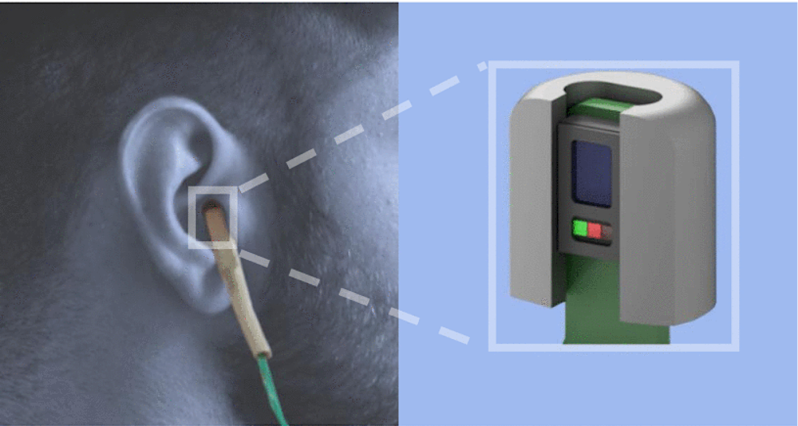
With all the attention given to heart rate monitoring and step counting, respiratory rate monitoring is often overlooked. Smartwatches are starting to incorporate respiratory rate monitoring more and more these days. However, current devices often simply look at breaths per minute without extracting more interesting features of the respiratory waveform which could give us more insight into our bodies than breaths per minute could alone. [Davies] and his team decided they wanted to change that by making an earbud that can measure respiratory rate.
We’ve seen a few commercial earbuds and headphones that can measure heart rate and tune your music to the rhythm of your heart. [Davies’s] project uses photoplethysmography (PPG) which measures changes in blood volume with each heartbeat and is often used to determine heart rate. As it turns out, PPG can also be used to measure respiratory rate as well. When we breathe in, the pressure in our chest cavity decreases which leads to a decrease in central venous pressure and a subsequent decrease in the DC and AC components of the PPG waveform. These modulations in the PPG waveform due to respiration are much slower than the ones we see due to your heart beating, making them often overlooked in common PPG measuring devices. As you could imagine, [Davies’s] project could be really useful for not only determining the respiratory rate, but also examining time domain changes in the respiratory signal that could indicate asthma, sleep apnea, and chronic obstructive pulmonary disease (COPD).
Interestingly enough, he uses similar hardware to extract the PPG signal as we’ve seen in other heart rate monitoring devices. A simple analog front-end with an infrared LED to illuminate blood vessels underneath the skin and a photodiode to measure changes in the LED signal reflected from the tissue underneath the skin. Since the blood volume changes slightly with breathing, the LED signal reflected from the tissue changes slightly as well. And by analyzing these small changes in the reflected LED signal, he could extract the respiratory waveform and look at changes in the signal between people with a respiratory disease like COPD and people without the disease.
We recommend giving [Davies’s] paper a thorough read. Maybe we can incorporate their analysis into other PPG measuring devices we’ve seen here on Hackaday.
0 Commentaires